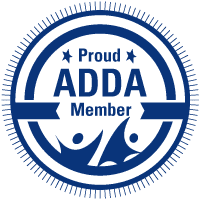We can probably all envision what might be contained in a typical toolbox:
- Hammer.
- Pliers.
- Screwdrivers.
- Nuts, bolts, screws, washers, etc.
- Cutting devices.
- Tape measure.
You get the point. All of these items are things that make getting a job done easier and more efficiently.
Now, picture what might be contained in a productivity toolbox.
- Environmental supports.
- Educational tools.
- Programs and apps.
- Support structures.
Here are some examples of what might be in a productivity toolbox:
Environmental supports:
Wall calendars: I highly recommend individuals have a large wall calendar within view of where they spend a great deal of time. This may be an office or kitchen, or both. Quickly identifying where we are in a given week, month, or year is powerful to help identify the passage of time.
Analog clocks: Yes, analog vs. digital. Our brains imprint the passage of time differently with analog clocks than with digital clocks. So again, having analog clocks anywhere we need to identify where we are in a day is critical to making appropriate transitions to subsequent activities like picking up the kids from school.
I’m a big fan of physical planners. I’m tactile, so I like the feel of paper. In addition, a physical planner gives a different visual representation of commitments than little dots on our phones may. As far as planners so, the Planner Pad, although not marketed as a planner for the ADHD brain, many of my clients have found this funnel format useful to manage their busy lives.
The Time Timer is my go-to tool for helping individuals “see” the passage of time, increasing focus and self-regulation.
The Tile Tracker is both an environmental support and an app. Attach Tile tracking devices to any number of things like keys, planners, medication, etc. The “Find” feature helps locate items or will help you determine the last time your Tile app was connected.
Educational tools
ADHD is tricky, and there is much information (and misinformation) about ADHD and ADHD management. Visit my resources page for websites, authors, podcasters, etc., that are true experts in ADHD.
Programs and apps
I might not exaggerate when I say there are a million programs and apps to help us be more productive. Of course, a million might be a stretch, but only by a little. Here are some of my favorites:
Dropbox (cloud, digital file keeper), FocusMate (virtual body-doubling); Freedom (blocks distracting apps and websites); Clockify (tracks where time is spent); SimpleMind (mind mapping software); Grammarly (helps create precise and effective communication).
Support structures.
Different individuals need different support structures.
If one can afford to delegate anything you aren’t good at and that you can trust someone else to do. I outsource my SEO, while others outsource their social media, accounting, marketing responsibilities, etc. If you can’t outsource, define how important the task is, then put boundaries around how much time you will spend doing it. Spending too much time working on things far outside our expertise or comfort zone is time and emotion-draining.
An accountability partner can be priceless in keeping you honest about your intentions. An accountability partner may be a trusted friend, business partner, or acquaintance. Before engaging in an accountability relationship, ensure both parties have the same idea of what “accountability” looks like.
And, if necessary, engage with appropriate medical and mental health practitioners who understand your situation and goals.
What is the status of your productivity toolbox? What needs to be added? What are your next steps to ensure your productivity toolbox supports you and your goals?
Cindy Jobs, PCAC, ACC
Looking for more information?
Click here for ADHD-friendly Time Management Tools
Click here to schedule a complimentary breakthrough session.
For more helpful information, follow me on Facebook.







